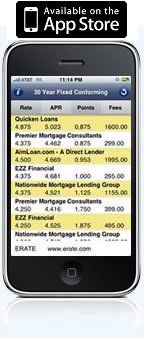Understanding Credit Cards: Finance Charges Explained
by Amy Lillard
Credit and credit cards are an integral part of our economic system today. But there is a lot of misinformation and misunderstandings about credit. In this continuing series, we examine key concepts, tips and best practices when it comes to credit cards.
(11/8/2012) Most credit cards work on a system of revolving credit, allowing borrowers to carry a balance instead of paying off the total amount each month. In exchange, companies levy finance charges.
Finance charges are interest fees. Just as you must pay interest on mortgages, home loans, or other loans, credit cards charge interest for borrowing money. However, unlike other loans in which interest remains essentially the same over time, credit card finance charges can change significantly over time depending on balance and the method by which companies calculate charges.
Generally, finance charges are calculated using the standard Annual Percentage Rate, based on the current federal prime lending rate. Different credit card companies will then add several percentage points of interest, using different methods and formulas to calculate finance charge. Common methods include:
• Average daily balance method. Perhaps the most common method of calculating finance charges, creditors apply the APR to your average balance during the billing cycle.
• Daily balance method. The credit card company looks at your actual balance each day of the billing cycle, and multiplies it by approximately 1/365th of your APR before adding it together.
• Two-cycle balance. In this method, credit card companies may charge interest on debt already paid. A borrower may start off a billing cycle with a zero balance, then purchase $250 of goods. The borrower opts to pay $200 during the grace period. The credit card company still charges interest on the $250 as they look at two billing cycles.
• Previous balance. Companies using this method will apply finance charges based on the outstanding balance at the beginning of a billing cycle.
• Ending balance. Interest is applied to the ending balance of the billing cycle in this method.
Here's where it gets tricky. You may have different finance charges applied to different amounts of your credit card balance. Purchases, cash advances, and balance transfers may all have different interest rates that apply, resulting in different finance charges. For all of them, the higher your interest rate and balance on your credit card, the higher your finance charge will be.
While it can seem a little confusing, credit companies are required by law to disclose the interest rate they charge and the method they use to calculate finance charges. Read your statements and your user agreements carefully to understand exactly how your fees are developed.
Finally, there is one way to avoid finance charges altogether. With most credit cards, if you pay your balance each month before the grace period ends, you avoid finance charges.
For Additional Reading:
Understanding APR: http://www.debtwave.com/blog/understanding-apr-finance-charges-how-they-are-calculated-and-how-a-credit-card-calculator-can-help.html
A to Z Guide to Credit Cards:
http://www.dca.ca.gov/publications/a_z_creditcard.shtml
An Explanation of Credit Cards and Related Issues:
http://www.investorguide.com/igu-article-90-credit-cards-an-explanation-of-credit-cards-and-related-issues.html
Other related articles:
Understanding Credit Cards: Choosing a Card
Understanding Credit Cards: Managing Interest
Understanding Credit Cards: How to Qualify for Credit Cards
Understanding Credit Cards: The Credit Bureaus
Maintaining credit health much like maintaining physical health
Understanding Credit Cards: Who Uses Credit Scores?
Understanding Credit Cards: The 5 Components of a Credit Score
Understanding Credit Cards: Checking Your Credit
Understanding Credit Cards: What is Credit?
Understanding Mortgages: What is a Credit Score?
Fannie Mae & Jumbo Mortgage Rates
Just One Click! = Current Rate Chart

Start by selecting your state

Amy Lillard
The ERATE® Resource Guide to No-Closing-Cost Refinancing
Principal Reduction: New Programs, More Controversy
Understanding Mortgages: Mortgage Paperwork
Understanding Mortgages: Types of Mortgages
Understanding Mortgages: How to Get a Mortgage
Understanding Mortgages: Buy or Rent?
Understanding Mortgages: Working with a Real Estate Agent
Understanding Mortgages: Working with a Real Estate Agent
Refinancing: Selecting a Loan

- Mortgage Program Options
- Interest Only Mortgage
- 100% Mortgage Financing - No Down Payment
- Mortgage Rates Comparison
- Search for Mortgage Rates
- No Costs Mortgage Refinancing
- 2% Rule - Refinancing Mortgage
- Yield Spread Premium
- Prepayment Penalty - Mortgage Refinancing
- What is APR and how is it calculated?
- Private Mortgage Insurance - Refinancing
Moving Ahead With Your Refinance
Get the Updated and Improved Mortgage Rates App from ERATE.com
FREE Mortgage Rate WidgetsYour State's Rates or National Rates Get this Widget for any State you want


